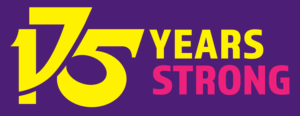Despite the abolition of differential pay scales for men and women in teaching in 1962, primary and secondary teachers were still on separate pay scales right up until 1987. This is because teacher pay was determined by the level of qualification, rather than by the role itself. The narrative of previous decades, which defined women as operating in different but equal spheres started to be challenged in the 1970s.
The same argument was used to justify different rates of pay for male and female teachers, which persisted until the 1960s. Between 1919 and 1962 differential pay in teaching, based on sex, was permitted. The justification of this was often cited as being that paid employment was seen as a passing phase for girls whose true career was as wife and mother.
This challenge to the assumption that women only worked as teachers as a diversion, before embarking on their proper role in life as a wife or mother, was an important step for the EIS. [‘Divide and rule: the marriage ban 1918–1945’ by Adams, K. (1990)]
In the 1920s, higher salaries for male graduate teachers were introduced to tackle the dearth of men in the teaching profession. The marriage bar and the introduction of differential pay for men did not have the effect of preserving teaching as a male profession. The mid 20th century saw a growth of women entering into higher education. In 1960, 5575 women obtained university degrees, and by 1970 this number had almost trebled to 15,618. This growth saw a large number of female teachers enter the profession, many of whom were the first in their families to graduate from a university.
By 1970, it was not permissible to pay primary and secondary teachers different salaries based solely on the sector they worked in. However, during the 1970s and much of the 1980s many women in teaching were paid considerably less than their male counterparts. This was a result of the fact that during the 70s the salary scale that set out teacher pay was determined by the level of qualification needed to take up the role. In the 70s it was possible to be a primary-school teacher without having a university degree (although increasing numbers were obtaining this qualification) at the same time as almost all secondary-school teaching requiring a degree level of education. This led to a significant gender pay gap between predominantly female primary teachers, and secondary-school teachers, who were largely male.

ACKNOWLEDGEMENTS:
Research, interviews and substantive writing:
Adi Bloom
Design and lay-out:
Stuart Cunningham and Paul Benzie
Additional writing and research:
EIS Comms Team and assorted staff members
Printed by:
Ivanhoe Caledonian, Seafield Edinburgh
Photography:
Graham Edwards, Mark Jackson, Elaine Livingston, Toby Long, Ian Marshall, Alan McCredie, Alan Richardson, Graham Riddell, Lenny Smith, Johnstone Syer, Alan Wylie


Thanks to the many former activists and officers who gave of their time to be interviewed and taken a stroll down memory lane. And of course a very special thanks to the EIS members who created this history through their activism and commitment to the cause of Scottish Education.
© 2022 The Educational Institute of Scotland